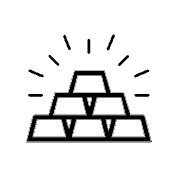- Functional depth
- Excellent tracking capabilities
- Advanced customization
Our review of Jira
Jira is the undisputed leader in agile project management. The tool is highly focused on software development teams, but can be used for any type of agile project, or you can turn to the more flexible, but less advanced Jira Work Management solution.
My opinion
Customer reviews
- Difficult to handle
- Deterrent price for small structures
- Limited communication capabilities
Ideal for marketing, HR and web development teams
From 0 for up to 3 users
Free plan and 7-day free trial
Sommaire
Jira is the project management software developed by software giant Atlassian. This tool is available in three versions:
- Jira Core: The basic Jira project and task management platform for users with no IT expertise.
- Jira Software: A specialized version of the tool designed for software developers.
- Jira Service Desk: The platform for customer support and IT professionals.
Jira Software is used by over 65,000 teams worldwide. It’s a great back office tool to use alongside a customer communication tool.
While its advanced personalization features make it suitable for all types of business, it is particularly well suited to marketing, HR and web development teams.
Read our review of Jira in this article!
Sommaire
My opinion of Jira in a nutshell
| Perimeter | Score | My opinion |
|---|---|---|
| Overall rating | 4,7 | A market leader in project management software – and with good reason. Its functional depth is hard to match, as is the community of users that has grown up around it. |
| Functional scope | 4,9 | One of the most advanced software packages on the market. An extensive customization offering makes it a product for a wide variety of structures – and always UX-friendly. |
| Reporting | 4,8 | Reporting is highly developed and customizable to track all issues and improve team performance. |
| Accompaniment/Support | 4,7 | The tool is cumbersome and time-consuming to set up within a team, but on the plus side, the highly-developed support can help you get up to speed a little more quickly. |
| Integrations | 4,9 | Numerous integrations (even for basic plans) make it a solution adapted to the working habits of many companies. |
| Value for money | 4,2 | Even if the price isn’t excessive, it can be a limiting factor for small structures. |
The advantages of Jira:
- Functional depth: One of the most advanced software packages on the market. An extensive customization offering makes it a product for a wide variety of structures – and always UX-friendly.
- Tracking: One of Jira’s greatest strengths is its tracking capabilities. Reporting is highly developed and customizable to track all issues and improve team performance. Jira’s Kanban and Scrum tools have practically become the industry standard.
The disadvantages of Jira:
- Difficulty of adaptation: The counterpart of functional depth is the difficulty of getting used to it. The tool is cumbersome and time-consuming to set up within a team, which can make it difficult to manage difficult tasks at first. This is mainly due to the fact that it is primarily designed for engineering and software development teams. On the plus side, the highly-developed support can help you get up to speed a little faster.
- Price: Even if the price isn’t excessive, it can be a deterrent for smaller structures. Especially considering the difficulty of adaptation.
Discover all the features of Jira!
Jira: the impressive functional scope
At Jira, every function has a purpose. And every one of them is highly developed, hence the success of this software.
#1 Ticket management

You gain insight into your customers’ needs, bugs and any other potential malfunctions. Tracking is highly developed: each ticket has a life cycle and can be linked to other past events.

There are 3 ways to manage tickets in Jira:
- Ticket manager: this function is very powerful, but it also implies a certain complexity. The manager therefore requires a mastery of basic code, and is more suited to software developers.
- Scrum and Kanban boards: Easier to use, they’re the choice of Agile teams.
- Jira queues: More for novice users.
#2 Scrum & Kanban: project management tools
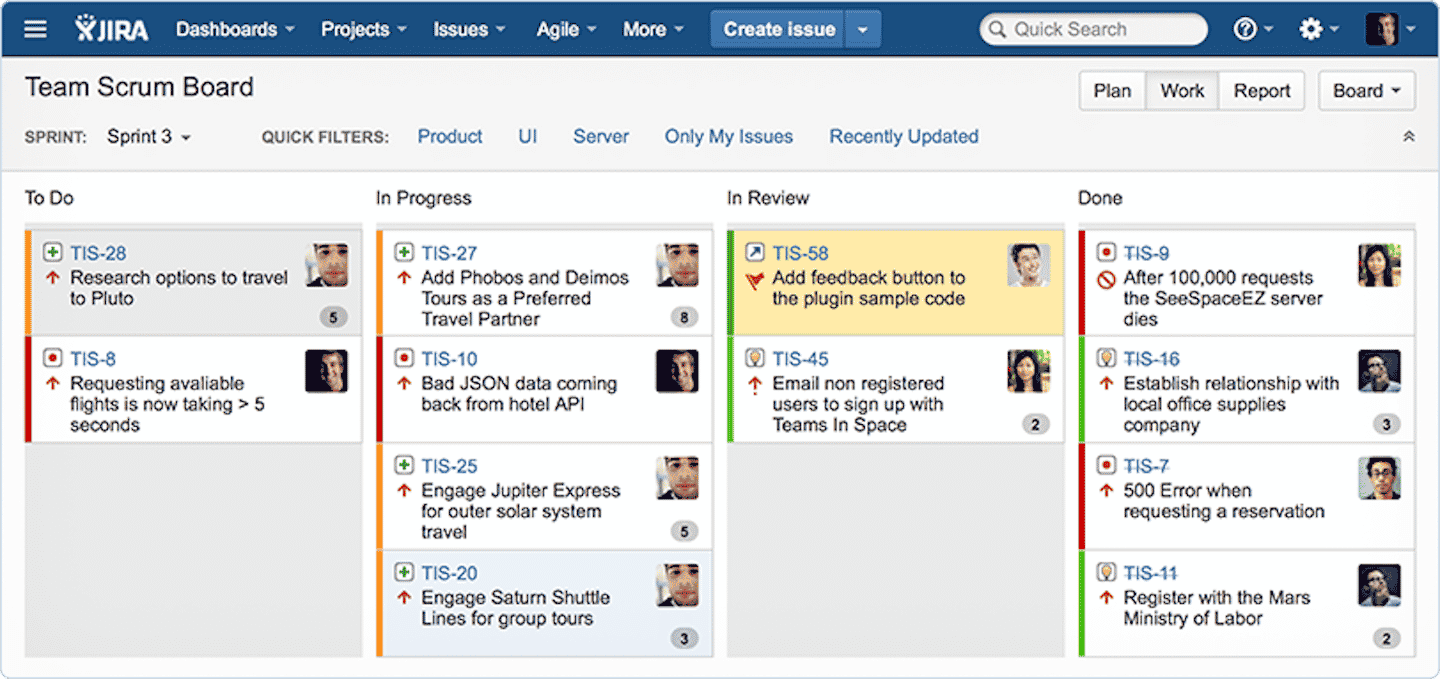
These are Jira’s project management tools. They are useful for visualizing objectives and targets:
- Scrum: The tables allow you to track different “sprints”, corresponding to the duration of a particular task, and which are broken down into sub-tasks.
- Kanban: Similar to Scrum, but with a more global function. He manages the project as a whole, taking into account the time needed to complete it.
Jira guides you through the 5-step creation process: choosing the project type, filling in the backlog, creating the sprint, visualizing the roadmap and improving through reporting.
The great advantage of these two tools is their customizability. The tables adapt to the workflow of software development, marketing and project management teams.
#3 Roadmap

Jira Portfolio adapts to every user:
- Team managers: To monitor the progress of the development team
- Agile development teams: To follow the project realization process
- Sales teams: to promote new functionalities to users before launch
#4 Automation
Jira’s “rules” function saves time and eliminates the need to handle repetitive tasks manually. Rules are specific conditions to be set in order to launch automation, which breaks down into 3 parts: triggers (predefined rules), conditions and actions (task execution).
When you trigger a rule or all conditions are met, Jira sends a notification. You are also informed if the conditions are met but the action is not triggered due to conflicting conditions.
Salesdorado’s opinion
Jira offers hundreds of automated templates that you can customize to suit your needs. Among the most popular: the daily summary on Slack or Jira’s connection with Bitbucket, GitHub or GitLab.
Discover all the features of Jira!
Reporting on Jira
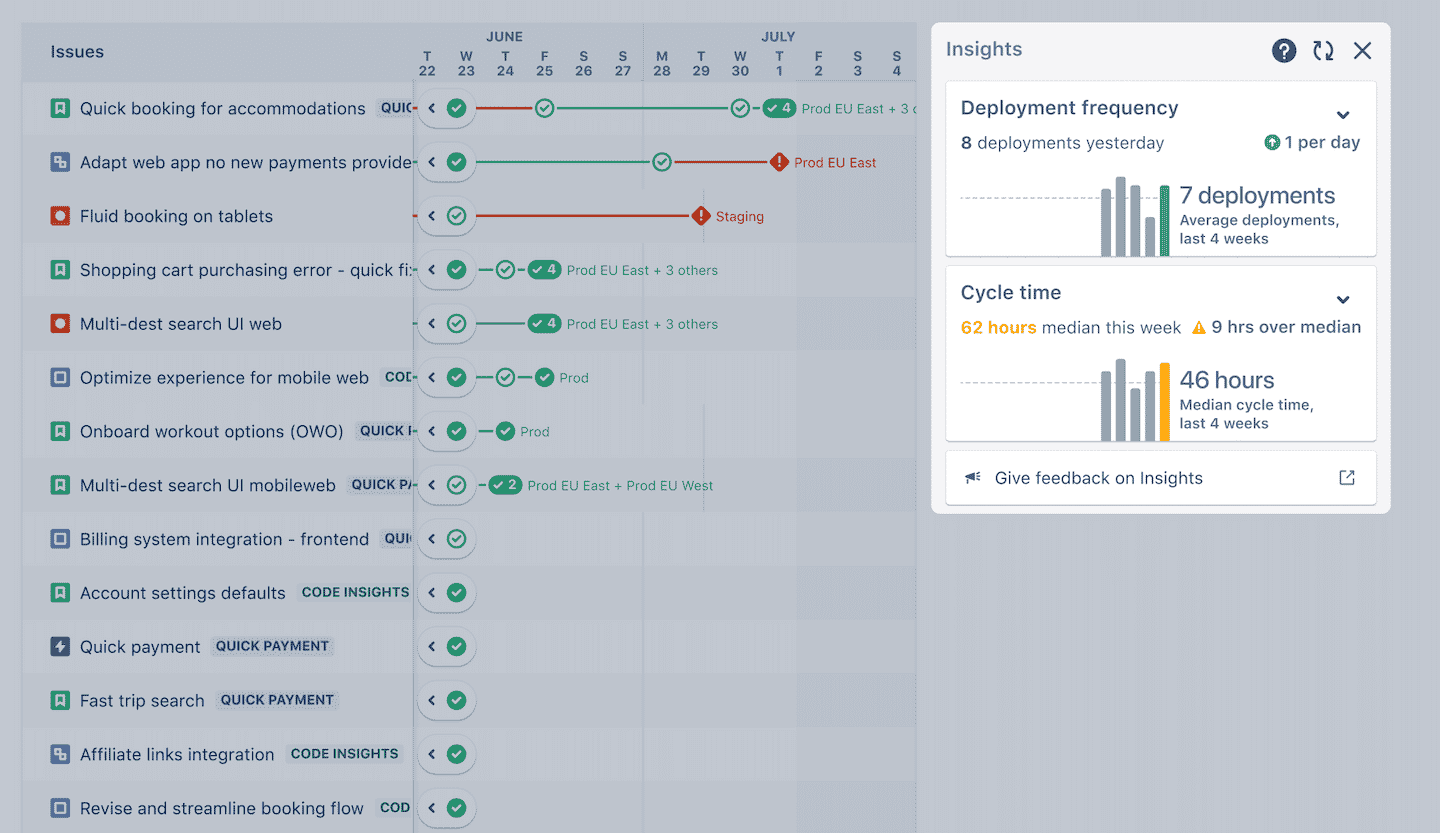
- Progress chart: Shows you the progress of your sprints.
- Release Burndown: Track product release dates for software development teams
- Velocity chart: tracks the time it takes to move from one sprint to the next.
- Cumulative flow chart: To track problems and blockages within a Kanban board
- Control charts: They determine the future performance of cycles on a Kanban board.
There are also reports on time tracking, average age, most recent tickets, agent workload, time to resolution, etc.
Discover all the features of Jira!
Jira: what customers say
Customers are generally satisfied with the product, praising its advanced features (tracking in particular). The recurring negative point is the difficulty of adapting to the complexity of the tool.
Make up your own mind about Jira!
Customer support at Jira
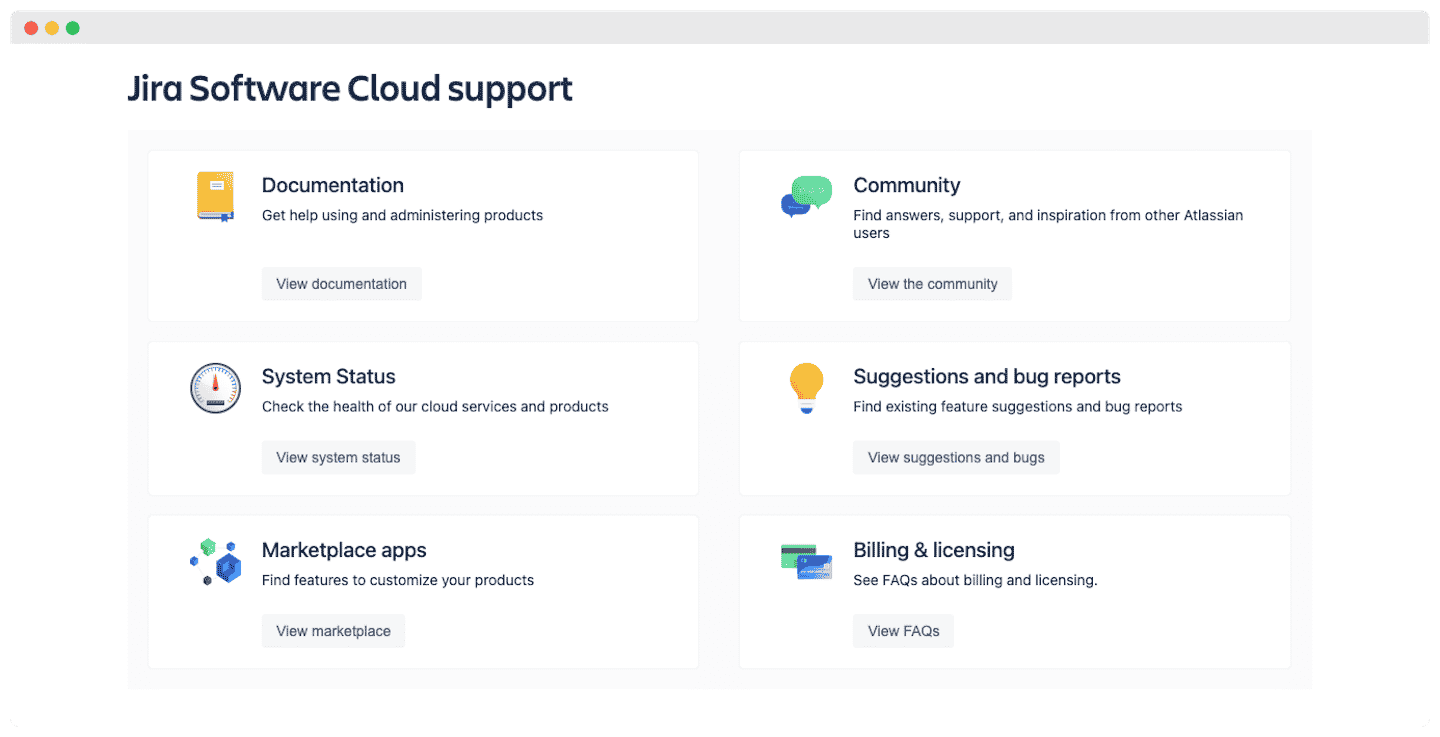
To give you a brief overview of Jira’s customer support:
- Contact options: Support is available by chat and email, during office hours for the Standard and Premium plans, and 24 hours a day for the Enterprise plan. Please note that telephone support is only available for the corporate plan.
- Helpdesk: The helpdesk is well-stocked and the platform well organized. The idea is to be able to solve your problems independently thanks to documentation.
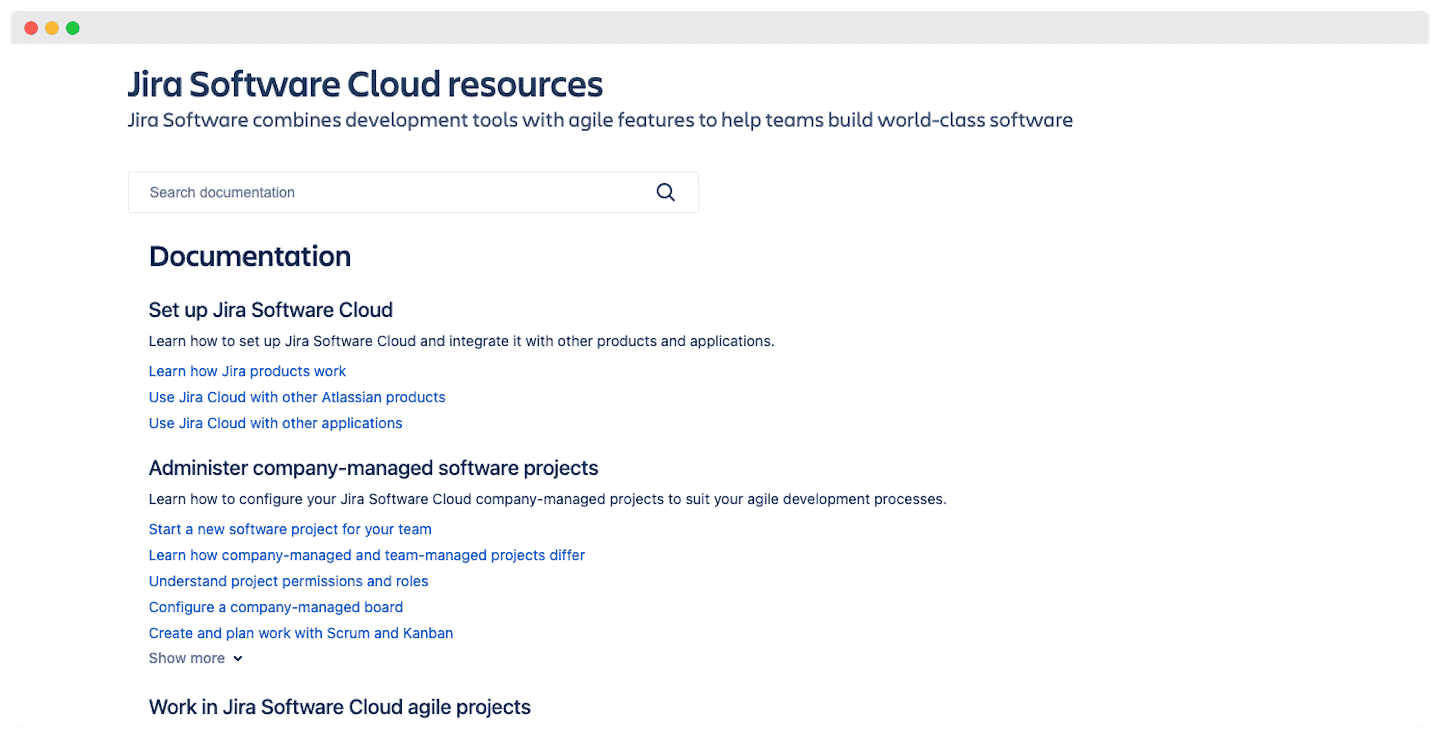
- User community: The community is just like Jira: highly developed. You can also take advantage of user self-help with their dedicated blog.

Salesdorado’s opinion
We appreciate the fact that they provide response times by problem category, so you know roughly what to expect.
Find out more about Jira customer support!
Jira integrations & mobile applications
Jira’s marketplace of integrations
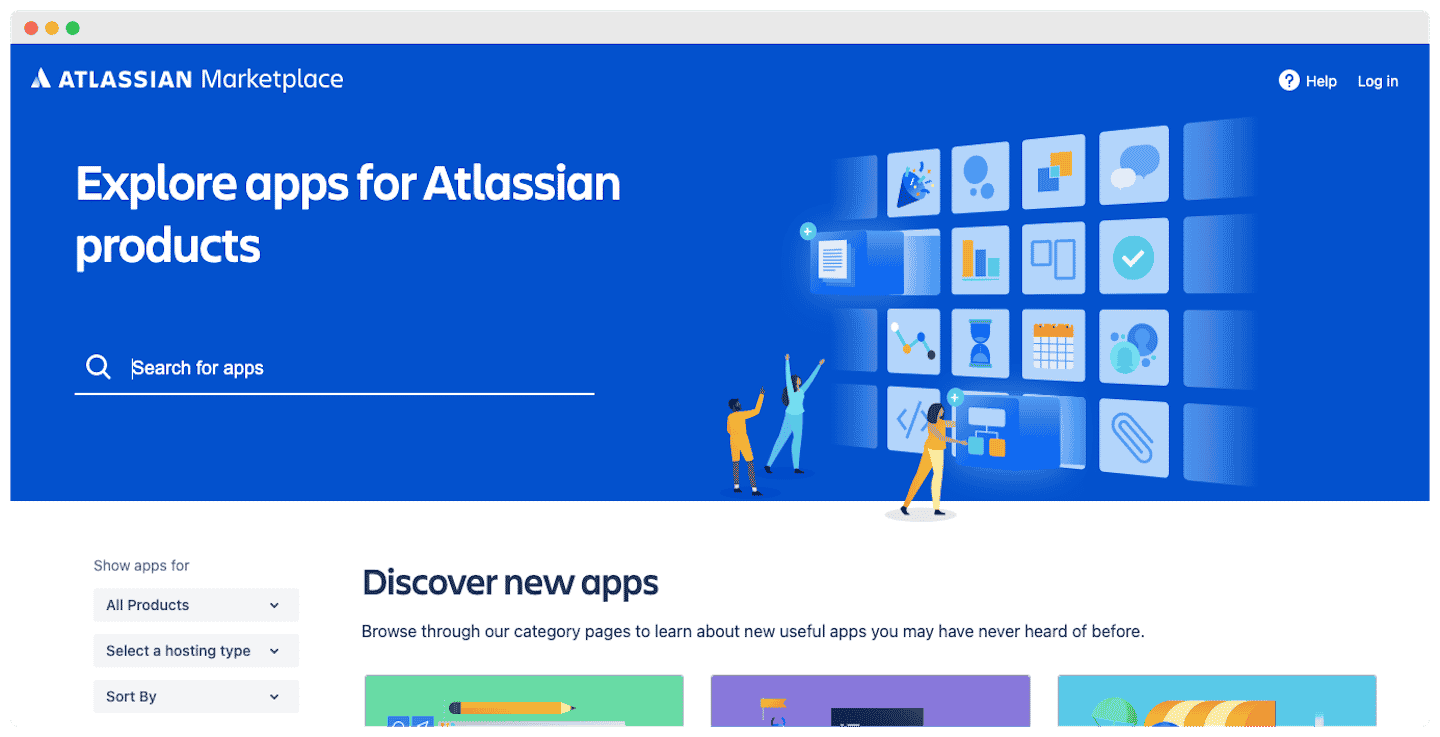
Here again, Jira’s marketplace of integrations is extremely rich. Here are just a few of these integrations:
- Channels: Whatsapp, Twitter, Gmail, etc. So you can respond quickly to your messages thanks to automatic synchronization.
- CRM: Atlas, Salesforce, Hubspot, etc. to update your contacts, transactions and activities.
- Project management software: Worklog, Deep Clone, Timesheet, etc. This lets you manage all your projects without leaving your inbox.
- Internal communication & collaboration: Slack and Zoom to initiate video meetings with your colleagues.
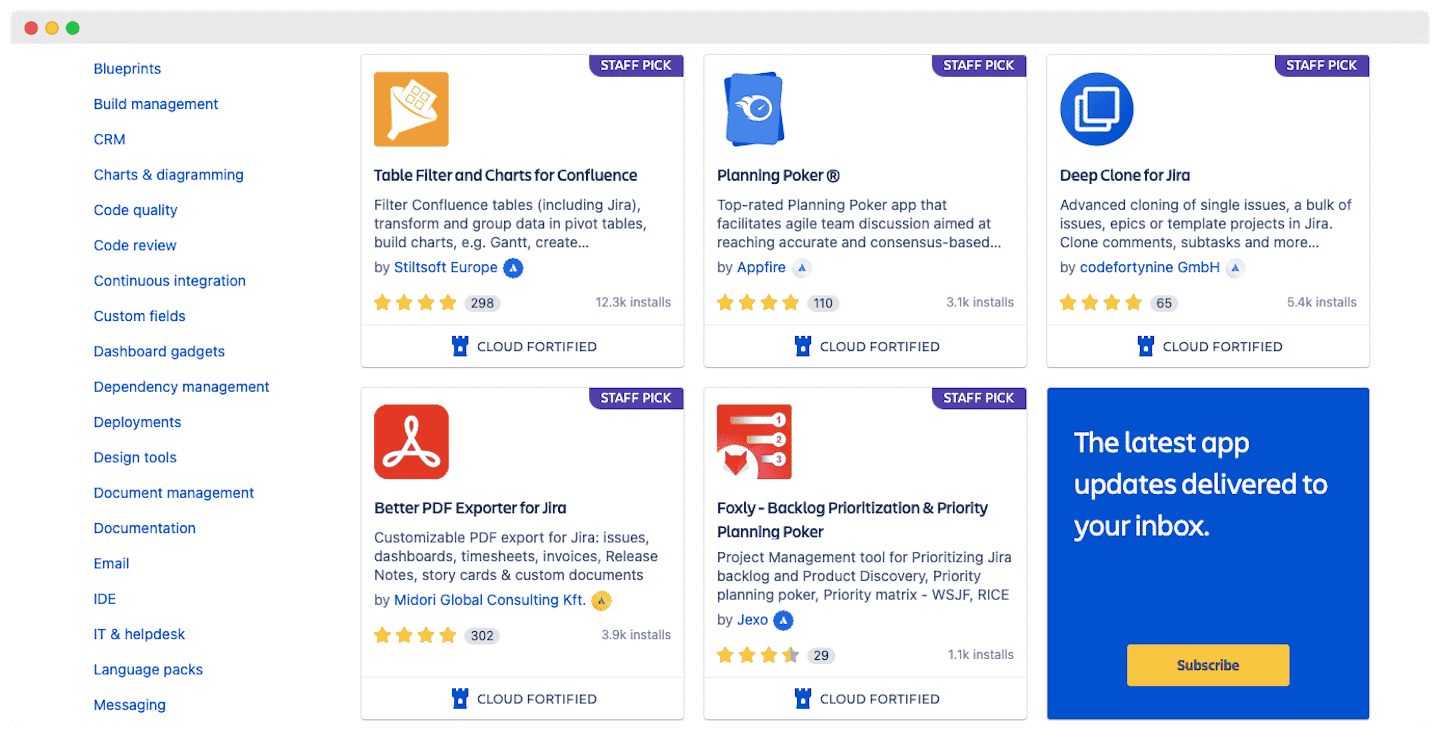
The mobile application
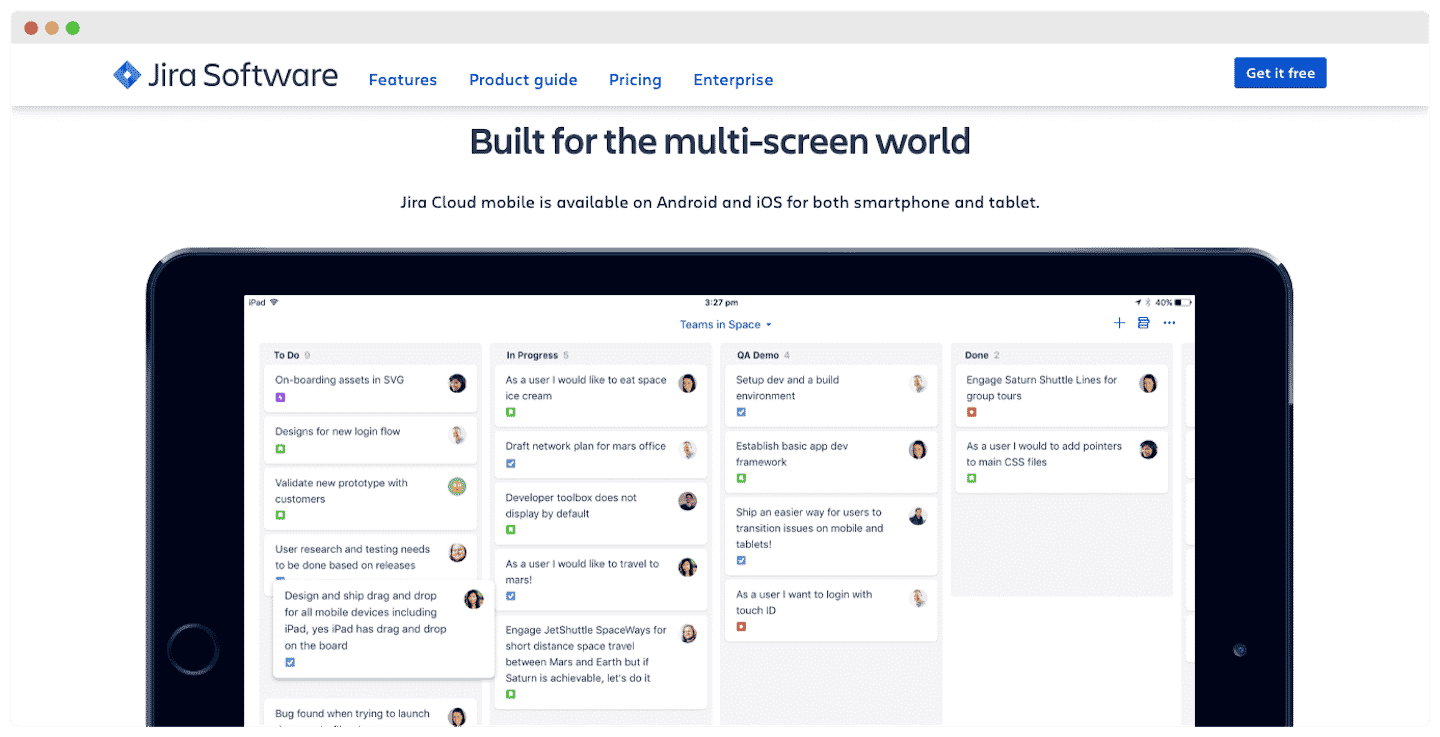
Note, however, that possible activities are limited to displaying tickets, adding comments and assigning them to users. You cannot create or modify tickets without using the software.
Discover Jira’s mobile application!
Jira rates
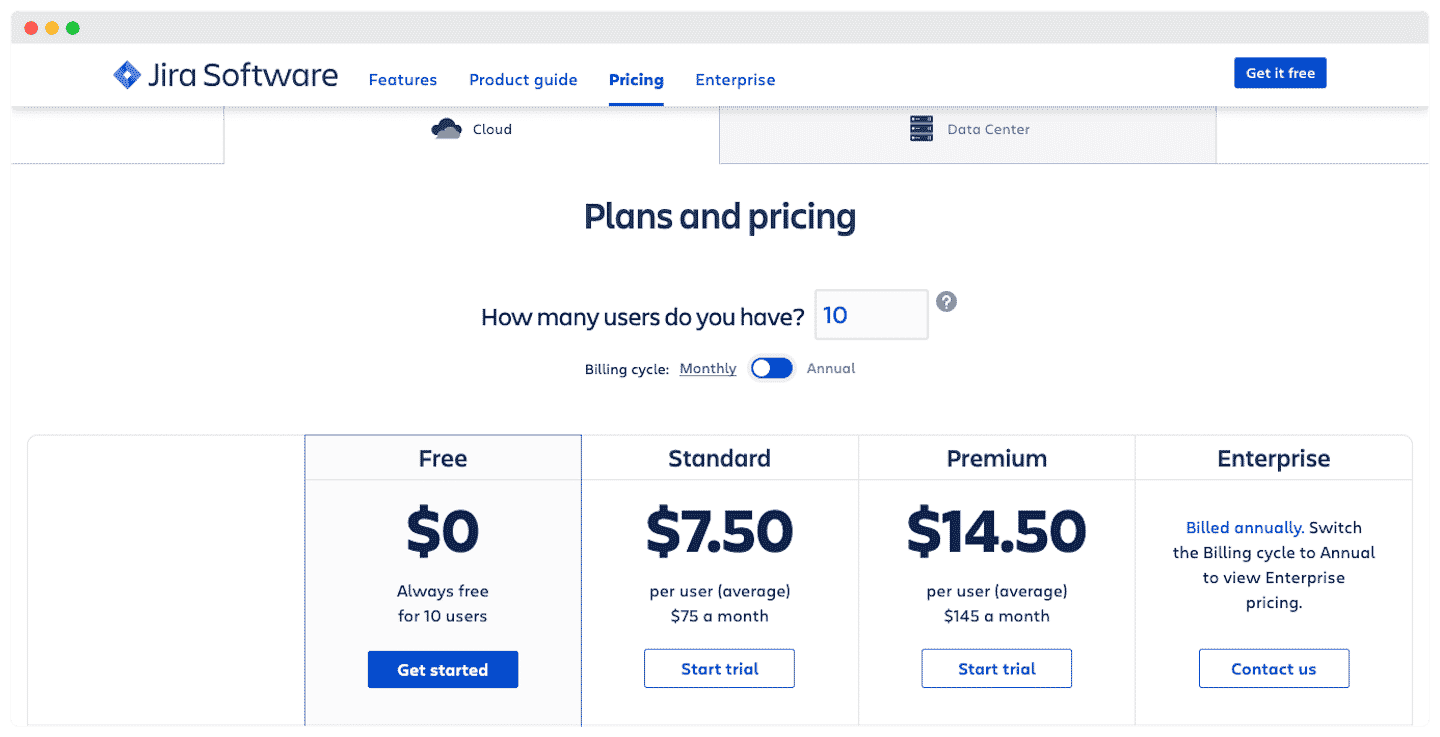
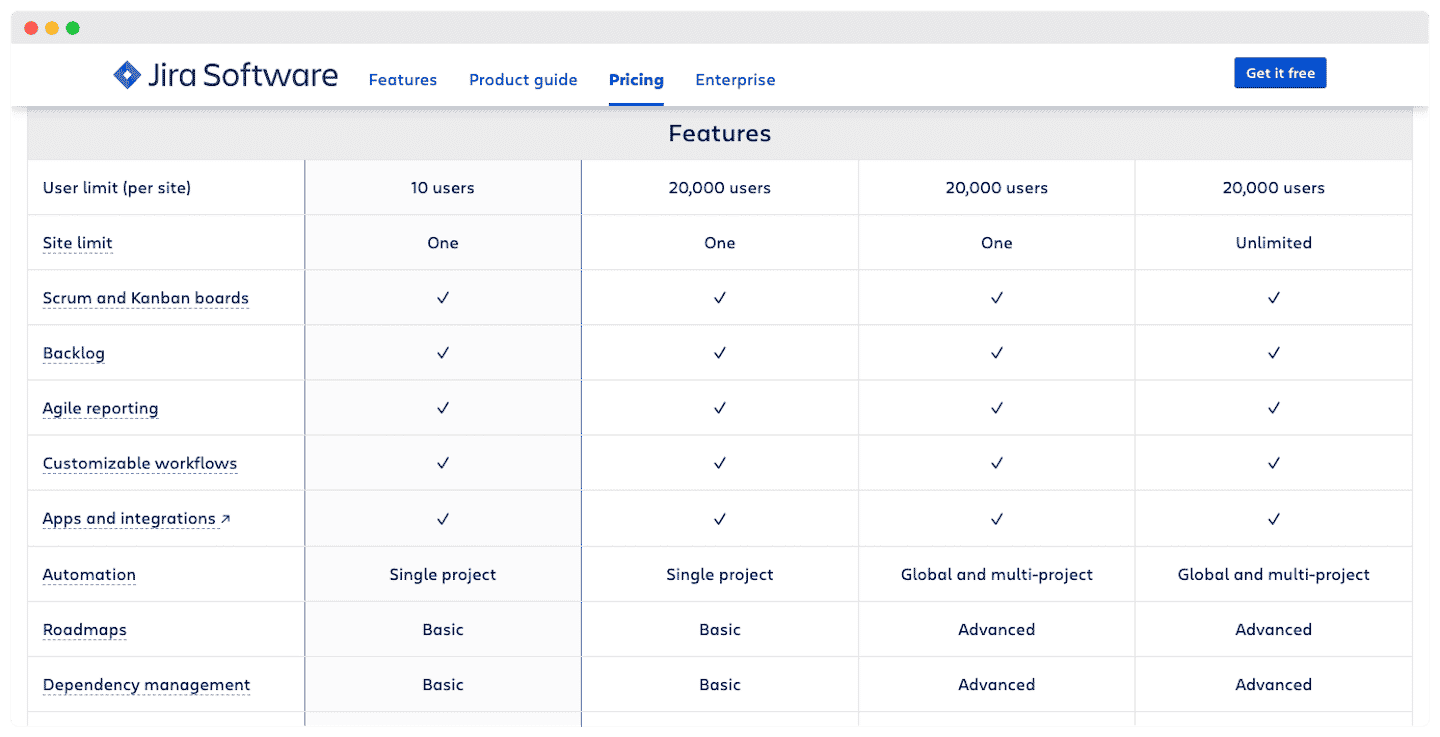
- Free: Limited to 10 users. Access to Scrum and Kanban boards, backlogs and customized workflows. The full catalog of integrations is available. 2GB maximum storage.
- Standard: $7.50/month per agent. Limited to 20,000 users. Support is available during office hours. 250 GB of storage.
- Premium: $14.50/month per agent. You benefit from 24-hour customer support and access to advanced reporting features. 250 GB of storage.
- Company: Prices on request, for an offer tailored to your needs. You benefit from all Premium features, including access to Atlassian Analytics and telephone support.
Pro tip
Get 2 months free when you sign up for an annual plan!
Going further
Discover all the features of Jira!

